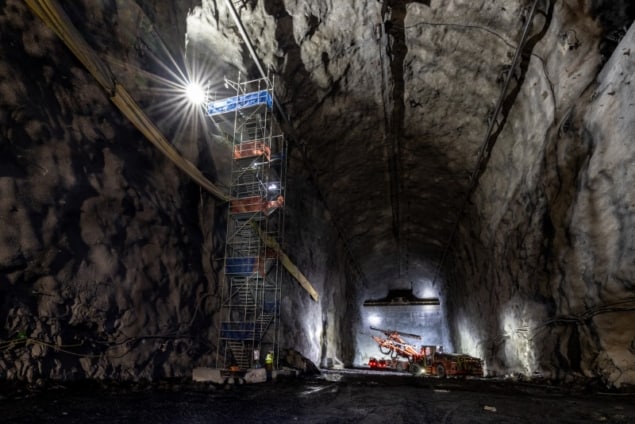
Excavation work has finished on two huge underground spaces that will be home to the Deep Underground Neutrino Experiment (DUNE).
The spaces are located 1.6 km underground at the Sanford Underground Research Facility in South Dakota and are some 150 m long and seven stories tall.
DUNE is part of the $1.5bn Long-Baseline Neutrino Facility (LBNF), which will study the properties of neutrinos in unprecedented detail, as well as the differences in behaviour between neutrinos and antineutrinos.
DUNE will measure the neutrinos that are generated by Fermilab’s accelerator complex, which lies around 1300 km away just outside Chicago.
The two spaces will be used to house DUNE’s four neutrino detector tanks that are each filled with 17 000 tonnes of liquid argon.
Construction on LBNF/DUNE began in 2017 while excavation of the underground spaces began in 2021. Some 800 000 tonnes of rock have been excavated and transported to the surface.
Engineers will now begin to install the systems needed for the detectors with the hope that they become operational by the end of 2028.
A smaller cavern, which is 190 m long but only 10 m tall, has also been created to house utilities for the operation of the detector.
“The completion of the three large caverns marks the end of a really big dig,” says Fermilab’s Michael Gemelli, who managed the excavation of the caverns by Thyssen Mining.“The success of this phase of the project can be attributed to the safe, dedicated work of the excavation workers, the multi-disciplined backgrounds of the project engineers and support personnel.”
- SEO Powered Content & PR Distribution. Get Amplified Today.
- PlatoData.Network Vertical Generative Ai. Empower Yourself. Access Here.
- PlatoAiStream. Web3 Intelligence. Knowledge Amplified. Access Here.
- PlatoESG. Carbon, CleanTech, Energy, Environment, Solar, Waste Management. Access Here.
- PlatoHealth. Biotech and Clinical Trials Intelligence. Access Here.
- Source: https://physicsworld.com/a/excavation-of-huge-caverns-complete-for-the-us-deep-underground-neutrino-experiment/



